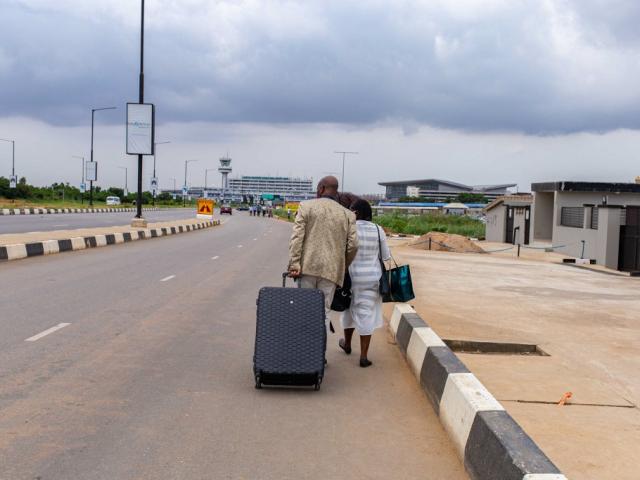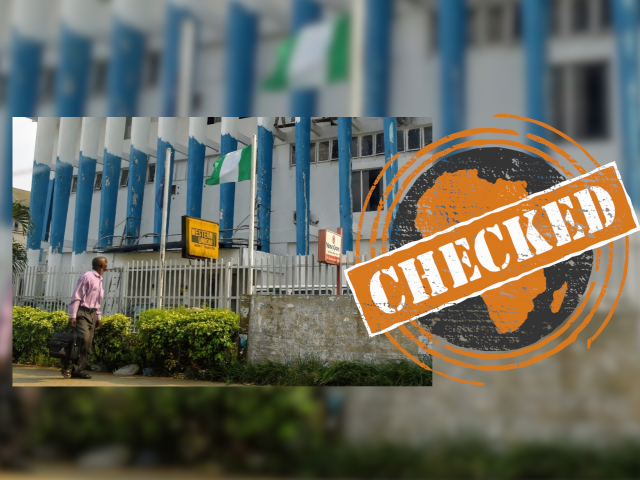The claim has also been shared on Facebook, with a link to a CNBC article headlined: “WHO considers ‘airborne precautions’ for medical staff after study shows coronavirus can survive in air.”
Has the new coronavirus that causes the disease Covid-19 been “confirmed” as airborne, staying in the air for eight hours?

Some medical procedures keep virus droplets in air ‘a little bit longer’
First up, the CNBC article cited in the posts does not claim this. It was reporting on a World Health Organization press briefing on 16 March 2020.
In the briefing, Dr Maria van Kerkhove, head of WHO’s emerging diseases and zoonosis unit, said the coronavirus was spread in droplets – from sneezing, coughing and talking – that quickly settled on surfaces.
But some “aerosol-generating” medical procedures in healthcare facilities could cause the droplets to stay in the air “a little bit longer”, she said. This meant health workers would have to take extra precautions when doing those procedures.
“Aerosols” are any kind of particles suspended in the air.
Van Kerkhove’s actual words were: “When you do an aerosol-generating procedure as in a medical care facility, you have the possibility to what we call ‘aerosolise’ these particles, which means they can stay in the air a little bit longer.
“And in that situation, in healthcare facilities, it's very important that healthcare workers take additional precautions when they're working on patients and doing those procedures.”
Her point was that a medical “aerosol-generating procedure” could cause virus-carrying particles to “stay in the air longer than they would if you were just normally talking to someone”.
On 28 March Van Kerkhove retweeted a WHO advisory: “FACT: #COVID19 is NOT airborne. The #coronavirus is mainly transmitted through droplets generated when an infected person coughs, sneezes or speaks.”
FACT: #COVID19 is NOT airborne.
The #coronavirus is mainly transmitted through droplets generated when an infected person coughs, sneezes or speaks.
To protect yourself:
-keep 1m distance from others
-disinfect surfaces frequently
-wash/rub your ?
-avoid touching your ??? pic.twitter.com/fpkcpHAJx7
— World Health Organization (WHO) (@WHO) March 28, 2020
‘Maintain hand and respiratory hygiene’
The WHO has throughout the pandemic held that the virus is not airborne. This is increasingly being debated – but more on it shortly.
Andrei Muchnik, a WHO spokesperson, said that “based on the information received so far and on our experience with other coronaviruses, Covid-19 appears to spread mostly through respiratory droplets (for instance produced when a sick person coughs) and close contact.
“Droplets are too large to be airborne for long periods of time, and quickly settle out of air. This is why WHO recommends that everyone maintain hand and respiratory hygiene.”
Van Kerkhove did not “confirm” that Covid-19 is airborne and remains in the air for eight hours, as the social media posts have said. They are false.
And she did not call for everyone to wear masks, everywhere. This is currently not the WHO’s advice.
But is Covid-19 airborne?
The term “airborne” is increasingly being questioned. In a detailed fact-check, fellow fact-checking organisation FactCheck.org says that while, in principle, the virus can be inhaled, a lot of context is required.
This includes the amount of virus expelled into the air and environmental conditions such as humidity.
Different viruses have different secretion sizes. Some are larger – or “droplets” – and others smaller, or “aerosols”.
Sars-CoV-2, the new coronavirus, is thought to have a smaller secretion size. Its infectiousness is also thought to reduce quickly, with half of the aerosols not viable after about an hour (half-life), as measured in a newly released study.
So you’d need a “perfect storm” to be infected in public through aerosols. Says FactCheck.org: “The ‘airborne’ term scares people — they envision this cloud of viruses that roams around the neighbourhood that can infect them.”
“The important thing [to know] is that virus released in the air from a patient is usually quickly diluted unless you’re in a really small space.” With time, the “level of risk becomes much, much lower.”
Still, should everyone wear a mask?
The WHO’s guidance remains that community-wide wearing of masks is unnecessary at this point.
At the press briefing, Van Kerkhove said that droplets are heavy and, outside some medical procedures, not normally aerosolised in everyday situations – so they don’t stay airborne. She added this meant the WHO’s guidance on the use of masks was “appropriate”.
“People in communities” should not “wear a medical mask unless they themselves are sick”.
Muchnik added that only people who are sick, care for others who are sick, or healthcare workers should wear masks. “A medical mask is not required for members of the public who do not have respiratory symptoms.”
While this remains the WHO’s official position, there’s a growing position that a widespread use of masks could play a role in preventing the spread of Covid-19.
Guidelines could change
The US Centers for Disease Control and Prevention’s current guidance is that healthy people don’t need masks or face coverings.
But it is said to be considering whether to recommend the use of do-it-yourself cloth coverings to lower the risk of an infected wearer transmitting the virus to others. In other words, to prevent an infected person from spreading their own droplets, especially if they don’t have symptoms and don’t know they are infected.
But this advice would not apply to medical masks, to prevent the public from buying them up. Medical masks are in short supply and needed by healthcare workers. The guidance would be that social distancing and thorough hand washing are the most effective.
(Editor's note: After we published this fact-check the CDC released new guidelines, which recommends "wearing cloth face coverings in public settings where other social distancing measures are difficult to maintain (e.g., grocery stores and pharmacies) especially in areas of significant community-based transmission". The agency adds: "The cloth face coverings recommended are not surgical masks or N-95 respirators".)
The US's top infectious diseases expert, Anthony Fauci, has said he would “lean towards" recommending a “much more broad, community-wide use of masks outside of the health care setting” once there was a sufficient supply of masks for healthcare workers.
“Something doesn't have to be 100% effective to be beneficial,” Fauci said of non-medical fabric masks, noting that there’s some “slight aerosol” when talking to somebody.
In parts of Asia, almost everyone wears a mask, with this reportedly seen as “safer and more considerate” as everyone could potentially be a carrier. Some countries, such as Israel, are now ordering people to wear masks in public as a precaution, including cloths and scarfs.
It is likely that official advice on the everyday use of masks could change as more research becomes available – if only to make some dent in transmission. – Africa Check
Republish our content for free
For publishers: what to do if your post is rated false
A fact-checker has rated your Facebook or Instagram post as “false”, “altered”, “partly false” or “missing context”. This could have serious consequences. What do you do?
Click on our guide for the steps you should follow.
Publishers guideAfrica Check teams up with Facebook
Africa Check is a partner in Meta's third-party fact-checking programme to help stop the spread of false information on social media.
The content we rate as “false” will be downgraded on Facebook and Instagram. This means fewer people will see it.
You can also help identify false information on Facebook. This guide explains how.





Add new comment